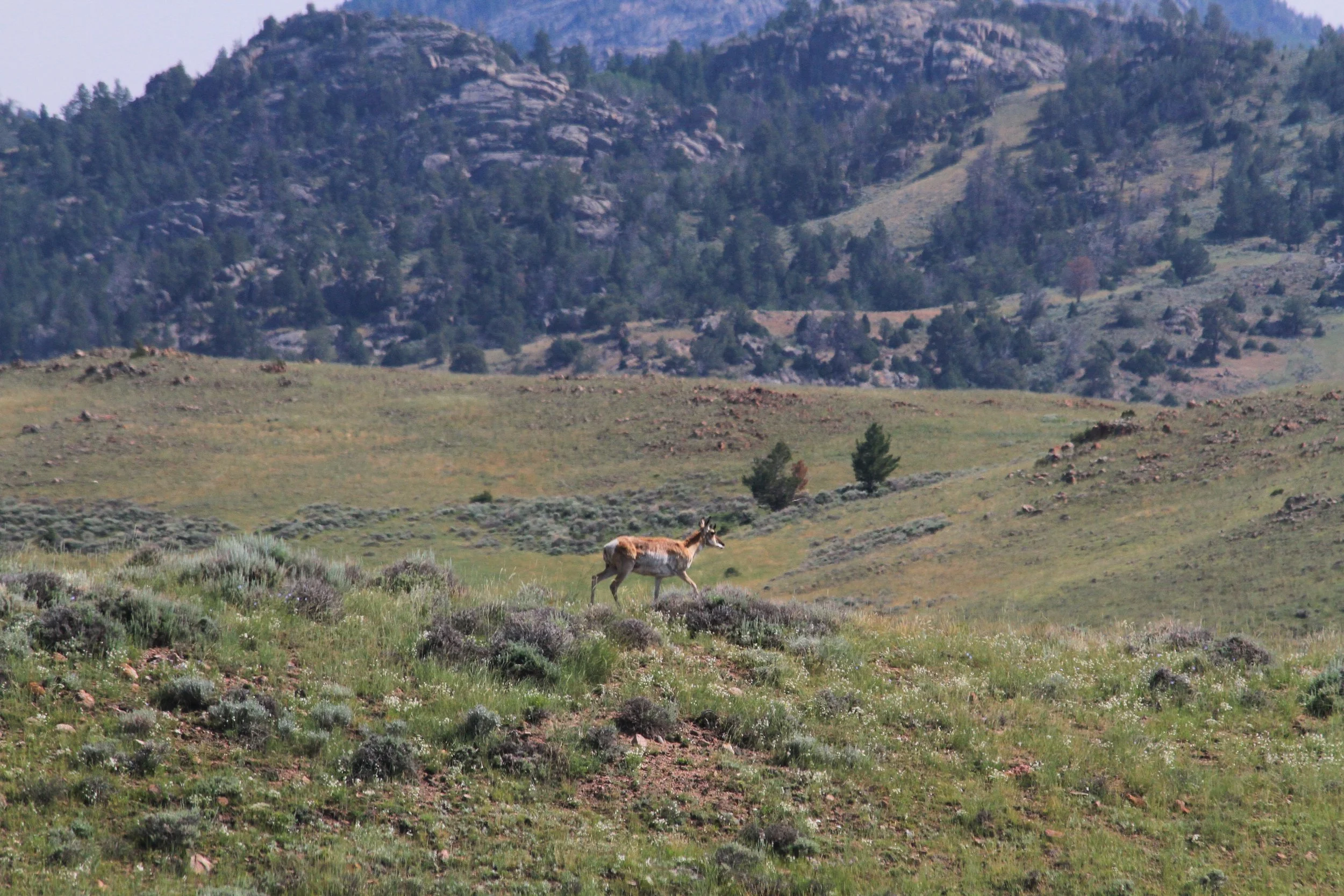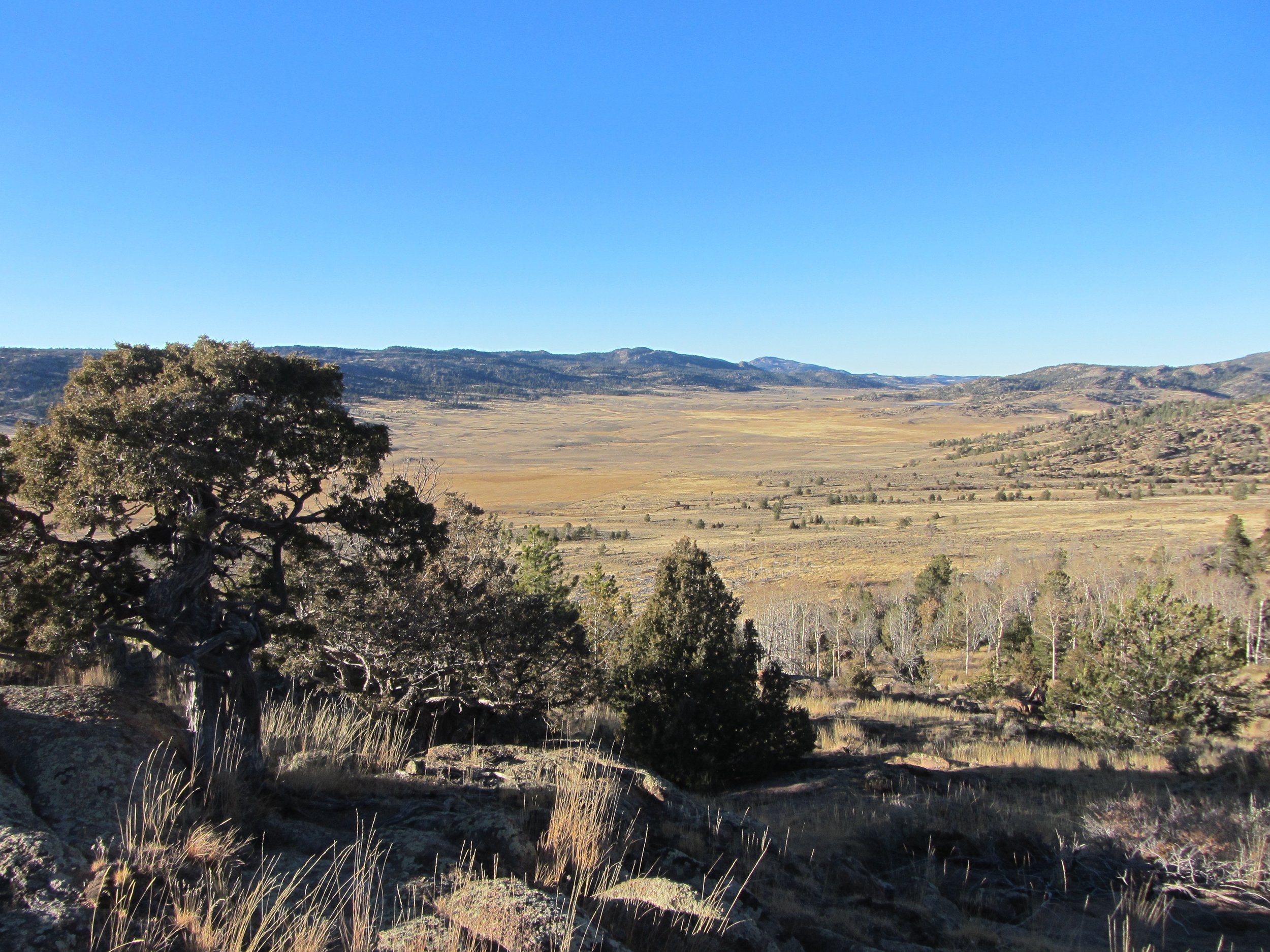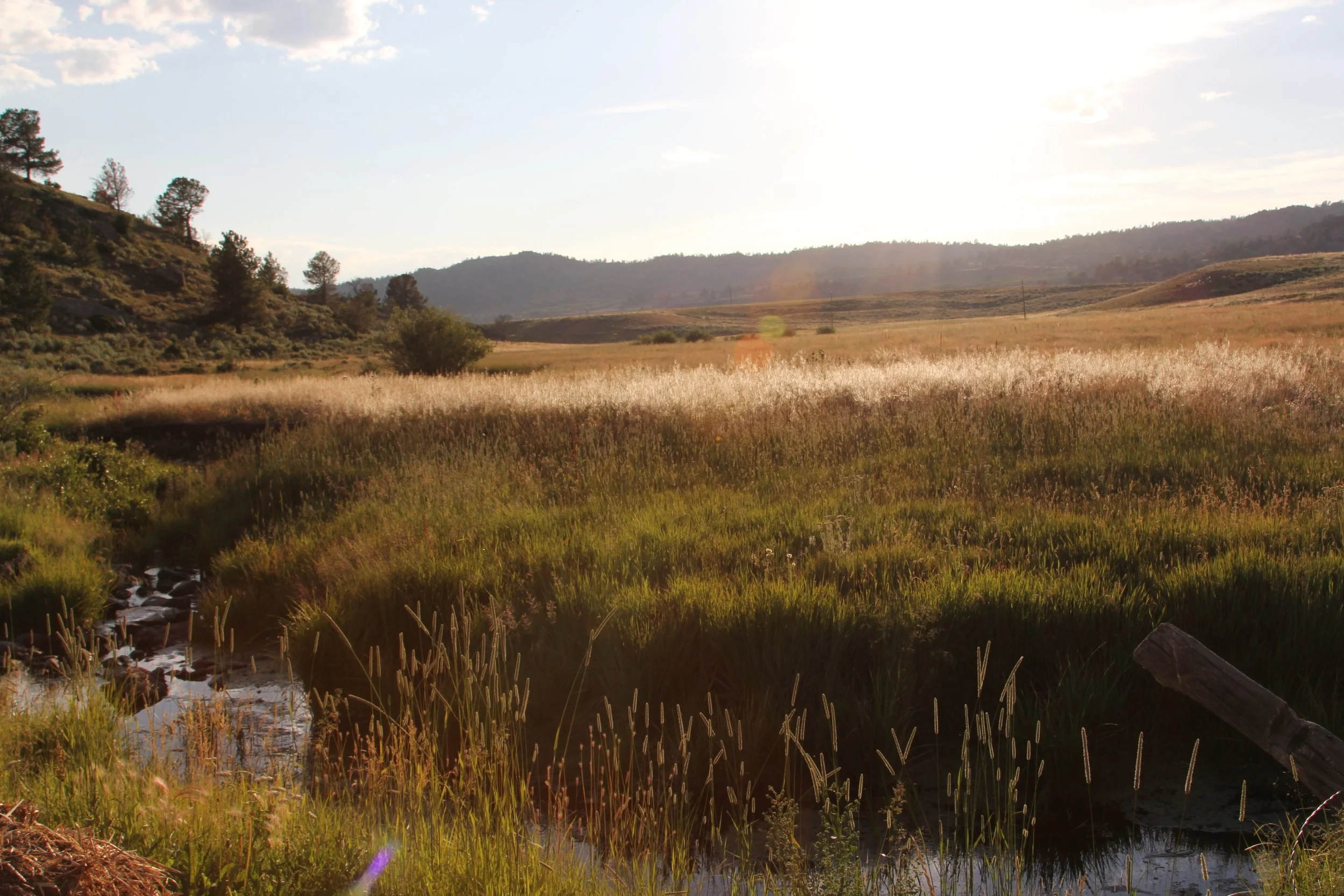
Who we are:
Bert Bell, (Celia’s great-grandfather) chose Toltec as his homestead spot. He had come from Pennsylvania to Wyoming via Texas. The reason he chose that particular spot was because he had found an exceptional spring there. The spring not only ran year round, but also produced exceedingly good water. He was working for the Bar M Cattle Co. (over the mountain to the south from Toltec) at the time. While he worked for the Bar M outfit, Bert didn’t draw wages, except just enough for a few “smokes” and a new pair of pants or a shirt when needed. Just as he had saved almost enough to file on his homestead, the Bar M Cattle Company went belly up and he ended up without a penny of his hard earned money! Not to be deterred, Bert went to work for Frank Prager and was finally able to file on his homestead with the exceptional spring.
Bert continued to work for Frank on and off to earn the funds to continue to add to his spread. After his first wife deserted him, his friends sent a letter (written like it was from Bert) to the Heart and Hand column in a newspaper back east as a joke. Eva J. Kelly answered it, and after corresponding for some time they met. She later moved from Ohio to the ranch and they were married. In addition to the two daughters she’d had by her two previous marriages, she and Bert had three sons: Albert, John (Celia’s Grandfather), and Wilson.
As other homesteaders froze out or droughted out, they would sell their homesteads to Bert. All that is left of those courageous homesteaders are some water rights they filed and some ruins of old their cabins, barns, and pitch post corrals. Their last names live on, however, as most of the pastures on the ranch, and several landmarks are named for them (i.e. The Reed, The Davis, The Bone, The Phillips, The Tuttle, Ellison Pass, the Eggleston Reservoir, etc.).
Bert died suddenly in 1928 when his middle son, John, was 17 years old. John buried Bert on what is now known as Graveyard Hill. Graveyard Hill is in view of the Home Place, and in sight of the exceptional spring. Eva was not prepared to manage the land or the money she inherited. After several weeks of discussion and planning, Eva and the boys agreed it would be best to try to split the ranch and the debts and try to stay afloat rather than giving up all that Bert had worked for.
Wilson (the youngest son) promptly sold his part and lit out for greener pastures. He ended up settling in Big Piney. Albert (the oldest son) and Eva went into debt, and when the bank foreclosed, they moved to Rock River to live. John (the middle son) not only paid off his part of the ranch, but borrowed the money to purchase the parts of the ranch owned by Eva and Ab. So as the depression started, John found himself with a large ranch very deep in debt. At that same time, he married Genevieve Peterson, a good member of the Church of Jesus Christ of Latter-Day Saints, from the Big Horn Valley. She had come to this part of the country as a “School Mar’am.” John worked hard and did whatever was necessary to keep the ranch running and pay off the debt. In addition to ranching, he trapped and sold pelts; carried the mail twice a week; rounded up and caught wild horses and sold them to the Army; and guided hunters. Eva later came to live with John and his family until her death.
John and Genevieve had one son and three daughters. They all attended a rural school at the Home Place for a while. But in order for the children to be well educated, Genevieve went to Laramie with the children and John “held the fort down” at the ranch for many years until they all graduated from high school. She and the children traveled back and forth on weekends whenever the weather and road conditions allowed. Both John and Genevieve believed that the many sacrifices were worth it because they both knew the value of a good education. (Interestingly, John only was able to obtain an eighth grade education when he was growing up, but he never stopped reading and learning.)
John eventually was able to purchase what is now known as the Forty Mile pasture. His two oldest children, John H. (age 12) and Laura Lee (age 10), fenced the entire 6000 acre pasture and rode their horses to and from it every day to do it! The old 40 Mile Stage Station used to sit at the north end of this pasture (there is nothing left of it but the family knows where it was located).
Bert and John’s family (fourth and fifth generations), continues to own and operate the ranch to this day. We still drink from the exceptional spring, that has never dried up, even in drought. The spring only varies two degrees from summer to winter and not only nourishes us, but our livestock as well.
Through good and bad times, normal to those who ranch, our family has kept the ranch moving forward and in the family. Actually, due to the ranch’s remote location and the fact it is nestled in the North Laramie Mountain Range, our family has probably faced some conditions other ranchers do not. Winters can snow you in for up to six months. The rugged landscape is beautiful but always works against you. There is no cell phone service or land line—just an internet phone at both houses. Mail is delivered twice a week—same schedule that John kept all those years ago when he was the mailman. Our closest neighbor is six miles away and it’s on the same ranch. If you are within 50 miles, you are considered a neighbor. Most of our neighbors have been our neighbors and friends for generations. And if you have a problem, those same neighbors will drop what they are doing and come rushing to help.
Our home doesn’t start and end at our front and back doors to our houses. It starts and ends at our property lines. We look forward to sharing the peace and serenity with you. Come prepared to lay aside the cares and stresses that burden you, and plan on letting nature’s beauty and vastness wrap around you and rejuvenate you. Rest from your hectic schedule. Come away refreshed and strengthened.









